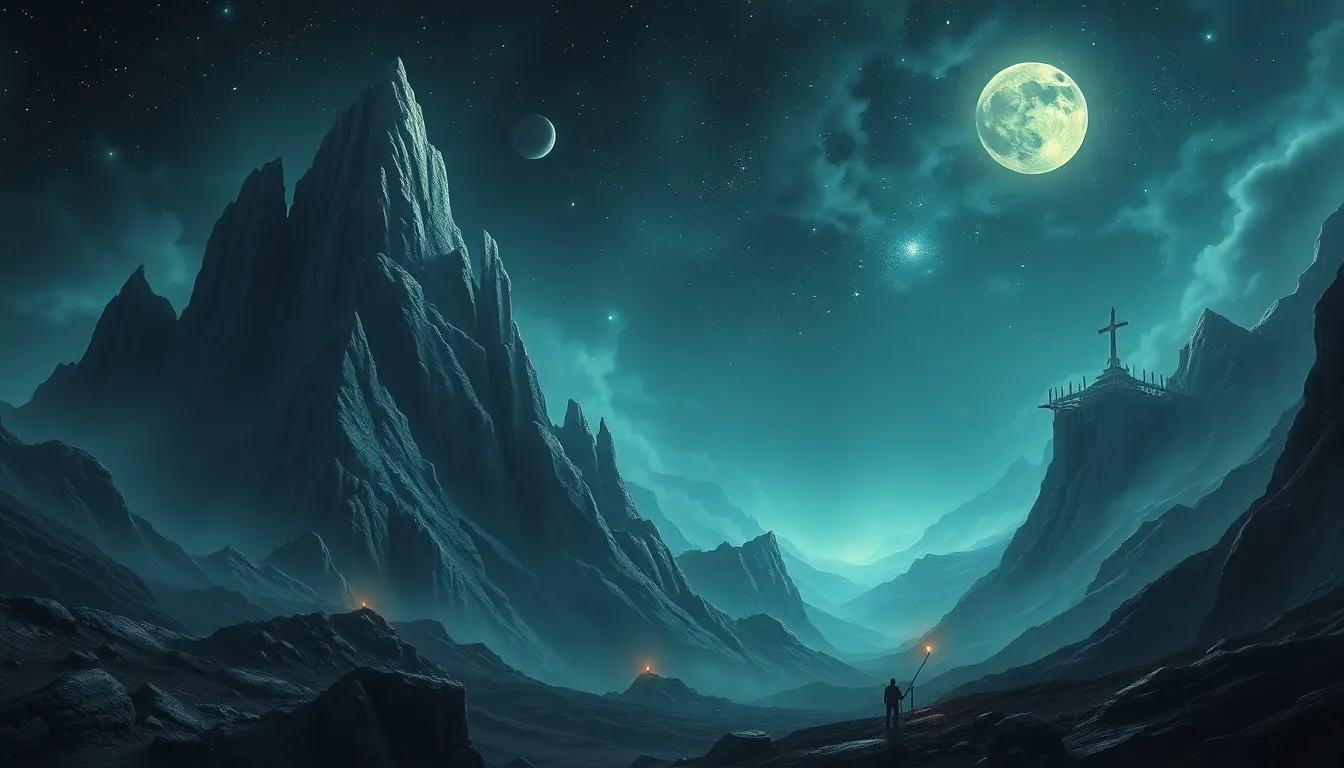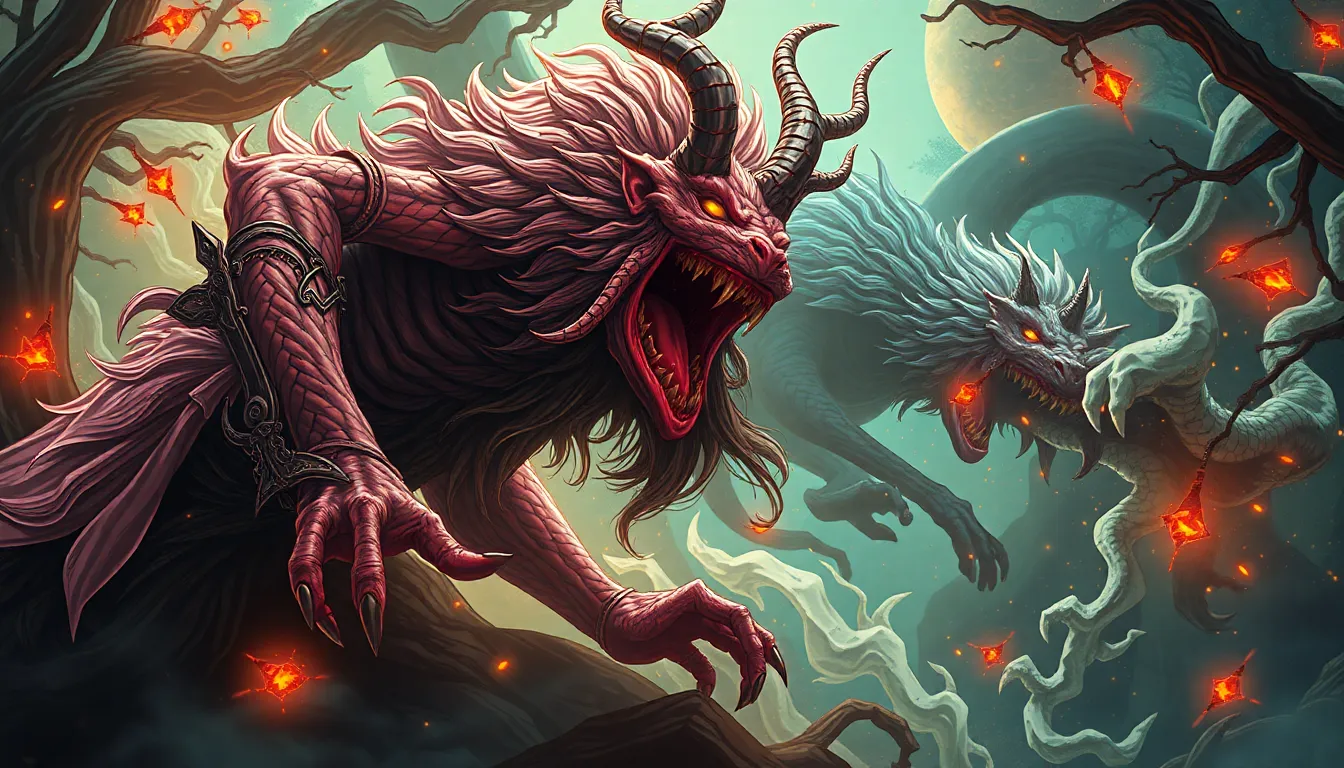The Mountain of the Lost Souls: Legends of the Afterlife
I. Introduction to the Mountain of the Lost Souls
The Mountain of the Lost Souls stands as a prominent figure in folklore, shrouded in mystery and reverence. Known by various names across cultures, this mountain is often viewed as a gateway to the afterlife, embodying the hopes and fears of those who believe in a world beyond our own.
Throughout history, the concept of the afterlife has been a significant element of human existence, informing mythology, religion, and cultural practices. The legends surrounding the Mountain of the Lost Souls highlight the diverse interpretations of what lies beyond death, reflecting humanity’s quest for understanding and comfort.
This article aims to explore the rich tapestry of legends associated with the Mountain of the Lost Souls, examining its historical context, cultural interpretations, and the rituals that have emerged in its shadow.
II. Historical Context of the Mountain
A. Geographic location and its cultural importance
The Mountain of the Lost Souls is typically located in remote regions often associated with spiritual significance. Its towering peaks and secluded valleys have made it a natural sanctuary for those seeking solace and connection to the divine.
B. Historical accounts and early mentions in ancient texts
Ancient texts from various civilizations, including early Chinese and Greek writings, reference a mountain that serves as a realm for lost souls. These accounts often describe the mountain as a place of judgment or a resting ground for those who have not found peace.
C. The evolution of the mountain’s legend over time
As societies evolved, so too did the legends surrounding the mountain. Originally viewed as a literal location for the afterlife, it gradually transformed into a metaphorical representation of the struggles and journeys of the human soul.
III. Major Legends Associated with the Mountain
A. The Tale of the Lost Souls: Origins and variations
The most prominent legend is that of the Lost Souls, which varies across cultures. In some tales, these souls are trapped, unable to move on due to unresolved issues or unfinished business. In others, they are seeking forgiveness or redemption.
B. The Guardian Spirits: Who are they and what do they protect?
According to folklore, guardian spirits inhabit the mountain, serving to protect the souls who wander its pathways. These spirits are often depicted as benevolent beings, guiding lost souls towards peace and understanding.
C. The Journey of the Damned: Stories of souls seeking redemption
Numerous stories recount the journeys of souls who traverse the mountain in search of redemption. These narratives often emphasize themes of struggle, sacrifice, and the quest for inner peace.
IV. Cultural Interpretations of the Afterlife
A. Comparison of Eastern and Western beliefs about the afterlife
Eastern philosophies typically view the afterlife as a cycle of rebirth, where souls are given multiple opportunities to achieve enlightenment. In contrast, many Western beliefs focus on a singular judgment and eternal afterlife, influencing how the Mountain of the Lost Souls is perceived.
B. Symbolism of the mountain in different religions
The mountain often symbolizes a bridge between the earthly realm and the divine. In many cultures, it represents a place of pilgrimage where believers seek to connect with the spiritual world.
C. The role of nature in shaping afterlife beliefs
Natural landscapes, including mountains, have always influenced human belief systems. The awe-inspiring presence of mountains often evokes feelings of reverence, leading cultures to imbue these formations with spiritual significance.
V. Rituals and Practices Related to the Mountain
A. Offerings and ceremonies performed by locals
Local communities often engage in rituals that include offerings such as food, flowers, and incense to appease the spirits of the mountain. These practices are believed to honor the lost souls and invite blessings from the spiritual realm.
B. Pilgrimages to the mountain: Purpose and significance
Pilgrimages to the Mountain of the Lost Souls are common, with individuals seeking healing, guidance, and spiritual insight. These journeys are often seen as transformative experiences.
C. Modern adaptations and their impact on traditional practices
As societies modernize, some traditional practices have evolved, incorporating contemporary beliefs and technologies into rituals. Yet, the core significance of the mountain remains intact, continuing to serve as a focal point for spiritual exploration.
VI. The Mountain in Literature and Art
A. Depictions of the mountain in folklore and storytelling
The Mountain of the Lost Souls has inspired countless tales, from ancient myths to modern novels. These stories often explore themes of loss, redemption, and the human condition.
B. Artistic representations: Paintings, sculptures, and multimedia
Artists have long been captivated by the mountain’s allure, creating works that depict its grandeur and the mysteries it holds. From paintings to sculptures, the mountain serves as a muse for artistic expression.
C. Analysis of contemporary works inspired by the mountain legend
Modern literature and art continue to draw inspiration from the mountain, reflecting contemporary societal fears and hopes related to life, death, and the afterlife. These works often reinterpret the legend for a new audience.
VII. Psychological and Philosophical Perspectives
A. The mountain as a metaphor for life and death
The Mountain of the Lost Souls serves as a powerful metaphor for the journey of life and the inevitability of death. It symbolizes the struggles faced and the ultimate quest for meaning.
B. The impact of the legend on human psychology and fear of the afterlife
Legends surrounding the mountain often evoke deep psychological responses, reflecting humanity’s intrinsic fear of the unknown. The stories of lost souls resonate with our fears of judgment and the afterlife.
C. Philosophical questions raised by the concept of lost souls
The idea of lost souls prompts philosophical inquiries about existence, morality, and the nature of the self. Questions arise regarding what it means to find peace and whether redemption is truly attainable.
VIII. Scientific Explanations and Skepticism
A. Geographical phenomena associated with the mountain
Some of the mountain’s legends can be linked to geographical phenomena such as unusual rock formations and atmospheric conditions, leading to tales of spirits and supernatural occurrences.
B. Psychological explanations for the belief in the mountain’s power
Psychologists suggest that the belief in the mountain’s power may stem from a natural human tendency to seek patterns and meaning in life experiences, especially concerning death and loss.
C. The role of folklore in understanding human experience
Folklore serves as a lens through which we can better understand human experiences, fears, and aspirations. The legends of the Mountain of the Lost Souls encapsulate universal themes that resonate across cultures and time.
IX. Modern-Day Relevance of the Legend
A. The mountain as a tourist attraction and its economic impact
Today, the Mountain of the Lost Souls attracts tourists seeking adventure and spiritual experiences. This influx of visitors has significant economic implications for local communities, often leading to the development of infrastructure and services.
B. How the legend influences contemporary spiritual practices
The mountain’s legend continues to inspire modern spiritual practices, with many individuals incorporating its symbolism into their personal belief systems and rituals.
C. The intersection of tradition and modernity in the
As society evolves, the intersection of tradition and modernity becomes increasingly prominent. The legends of the Mountain of the Lost Souls serve as a bridge connecting ancient beliefs with contemporary spiritual and cultural expressions.



